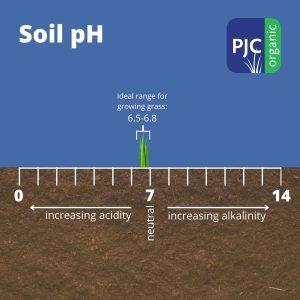Canada Goose (Branta canadensis) most Canada gees are migratory, but not all. They undertake long-distance migrations from northern Canada south and are typically most active in New England February-March. In some places, warmer winters have resulted in more permanent regional residency. Geese are typically seen in flocks and feed on open fields and park areas near waterways, leaving an unsightly, greenish brown manure and molted feathers littered throughout the fields.
They nest on the ground near bodies of water – typically within 200’. Both mothers and fathers will be very aggressive when defending newly hatched goslings until the birds are able to fly.
The problem with Geese
The presence of flocks of geese on your parks and athletic fields can affect not only soil chemistry but also compaction and damage the turf shoots from constant feeding. Goose droppings are rich in nitrogen and can be somewhat acidic due to uric acid content. Over time, in large quantities, this can lead to…
Goose droppings are rich in nitrogen, primarily as uric acid. As this breaks down, it forms ammonia and then nitrates through microbial processes. Nitrification releases hydrogen ions (H⁺), which acidify the soil. As the droppings decompose, organic acids are formed, contributing to pH reduction. Acidification can cause essential nutrients like calcium, magnesium, and potassium to leach out, further lowering pH and soil fertility.
This kind of pH shift can affect plant growth, soil microbial health, and nutrient availability. Turfgrass health declines below ~6.0 pH and roots can’t absorb nutrients well, and acidic soils increase risk of diseases and weed intrusion.

Management
Soil Test to confirm current pH, buffer pH and base saturation with a full soil test (not just pH). Apply lime based on test results. Lime slowly raises pH and improves nutrient uptake. Core aerate the field to relieve compaction and enhance lime incorporation. Over seed when aerating to thicken the stressed turf.
Use habitat modification or deterrents. Scaring the geese away consistently is the most effective as forcing them into flight discourages their comfortable lifestyle. Flashing lights and/or reflectors can deter geese from infesting areas but we’ve seen and heard mixed results from this management technique. Other methods like installing a small fence near a body of water has shown some success as they typically run to water bodies for safety – if they cannot easily run to the water, they find other areas to eat. Trained dogs are often the best managers of geese populations – this is a common tactic on golf courses. Utilizing a variety of management strategies is key, and being consistent with it over time will reap the best results. You will have a greater deal of success by deterring multiple generations of birds from nesting and living in an area.
